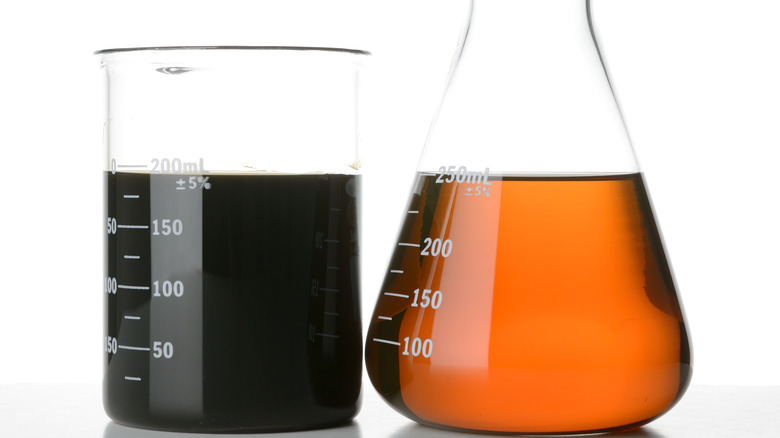What's The Oil Capacity Of A 6.6 Duramax Diesel? (And Which Type You Should Use)
We may receive a commission on purchases made from links.
Oil changes are an essential part of car care. Changing the oil yourself is the next level in this care, and it's a good reason to put yourself under the vehicle once in a while to at least visually check what's happening underneath. This especially holds true when the vehicle in question is a full-size Chevrolet or GMC with a 6.6-liter Duramax engine, as it can haul serious loads or go off-road. Thus, keeping tabs on the underside is a simple insurance policy for several problems.
If you haven't changed a vehicle's oil before, don't worry. It's not difficult, especially after you have done it once or twice. There are many videos on YouTube that show how it's done. You'll need the right motor oil and oil filter, and a drain pan to catch the old oil. The drain pan needs to be pretty big if you're changing oil on a Duramax — all 6.6-liter Duramax series engines take 10 quarts of oil! You'll also need to change the oil filter. You can get the ACDelco PF2232 Engine Oil Filter for Duramax engines from 2001 to 2019, or the ACDelco PF26F Durapack Engine Oil Filter for engines made after 2019.
Choosing the right oil for your Duramax
When the Duramax 6.6-liter engine first came out in 2001, GM recommended three motor oil weights. If the temperature was frequently below zero but not above 100 degrees Fahrenheit, GM recommended 5W-40. For periods with temperatures ranging between zero and 100 degrees Fahrenheit, 10W-30 was acceptable, but 15W-40 was preferable and the only recommended choice above 100 degrees. GM changed its recommendations after 2007, with only 5W-40 and 15W-40 oil suggested. However, the company's suggested temperature parameters remained.
Understanding the classification of motor oils, including the viscosity, will save you a lot of head scratching. The numbers indicate the oil viscosity at cold and hot temperatures. The W stands for "Winter," and indicates how thick the oil is at low temperatures. Smaller numbers indicate a lighter viscosity, meaning the oil will coat surfaces more easily. This doesn't mean higher numbers are worse, though, as thicker oils withstand higher temperatures better. Then there are diesel sulfur content and emissions designations from the American Petroleum Institute that GM says must be met. These are categorized under a "C" rating, which you will see on the packaging. The 2001 to 2007 engines need oil with API CH-4 or CG-4 designations, while engines built after 2008 require CJ-4 motor oil.

